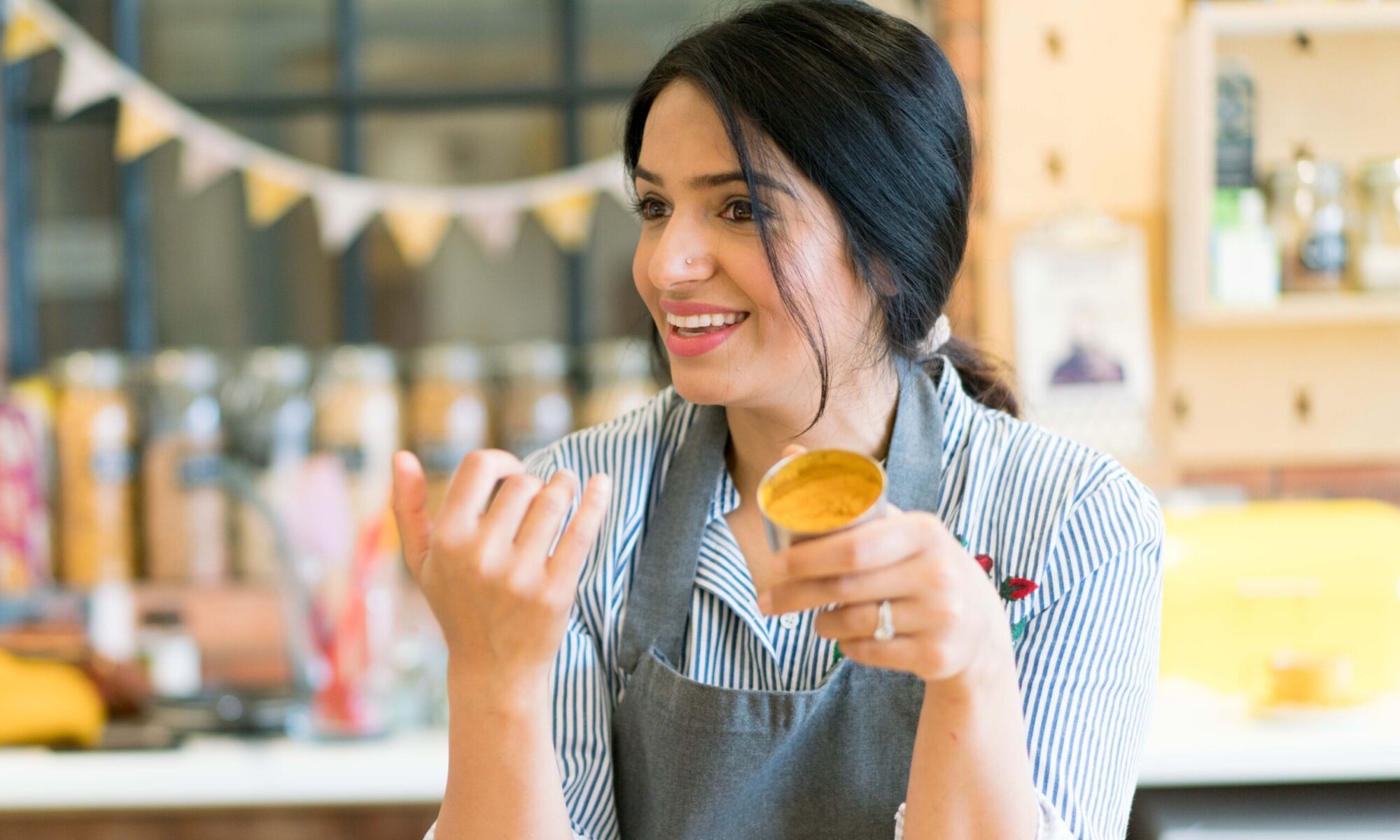
Methi ie. fresh fenugreek is one of my favourite greens! It is incredibly fragrant and flavourful and works well in so many different South Asian dishes.

In today’s recipe I have used fresh fenugreek to create a spicy paratha which is delicious as a side or even on it’s own as a snack. The gram flour adds nuttiness and the cooked potato is my secret weapon for ensuring that the parathas stay soft…even at room temperature.
They are also great for freezing! If you make a batch, you can layer the parathas between sheets of greaseproof paper. Feeling a little peckish? Heat up your pan and pop one on! Smear over some melted butter/ghee and pair it with a generous dollop of yoghurt. Mango pickle on the side? Don’t mind if I do!



Give them methi parathas a go and let me know what you think on Insta, Twitter or Facebook. love to see a pics of your recreations!
Oh and don’t forget to join me next Friday on 12th June for my next live cook-along class. Keep posted to my social media over the next few days to see what we will be making.
Happy cooking x

Ingredients
Equipment
Method
- Place all of the dough ingredients together in a bowl and mix well.
- Very gradually add 1/2 cup (115ml) warm water gradually to the bowl, constantly mixing and combining the dough together with your other hand.
- You should see the dry flour and vegetables begin to clump together
- At this point, you may need to add an extra 1-2 tbsp of water to form the dough. Only add a tiny little bit at a time and gauge how you much extra water you need to by feel – the dough should be soft and slightly tacky but not too sticky. (If you do feel like it has become too wet, you can rescue by adding some dry chapati flour and a pinch of salt).
- Very lightly grease your fingers and hand and knead the dough lightly for a minute to create a smooth dough. Cover with cling film and leave to rest for 10 minutes.
- After 10 minutes, place a little oil on your hand and re-knead the dough until smooth. Divide the dough into 4-5 smooth balls.
- Now, place your pan on medium heat. Whilst the pan is heating up, take 1 dough ball and press it into the dry chapati flour on both sides. Shake off any excess.
- Place on your work surface and roll out gently until it is 4-5″ in diameter and even in thickness all the way around (about the thickness of £1 piece). Increase the heat of your pan to the maximum setting. Carefully pick up the paratha, web your fingers and flip the paratha from hand to hand to get rid of any excess flour.
- Place it on the hot pan for 10-12 seconds. When it changes colour and small bubbles begin to appear, turn it over and cook the other side. Brush oil on this side and flip it over and brush the other side. Cook on each side until you see golden spots all over and it is crispy.
- Finish by smearing a teaspoon of ghee or butter. Make the rest of the parathas using the same process.

